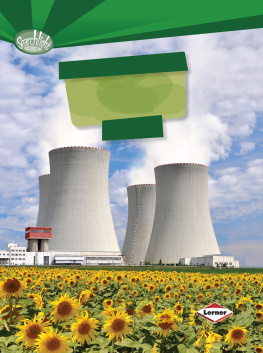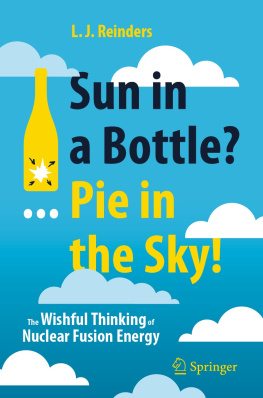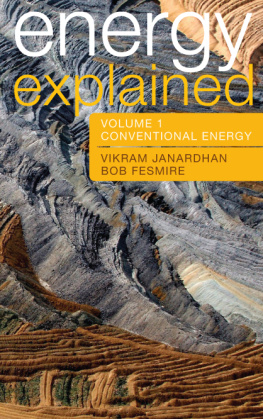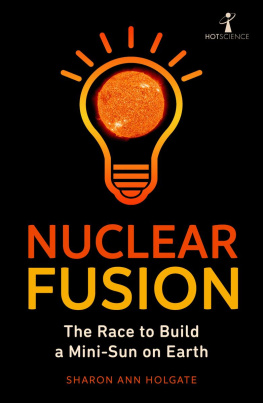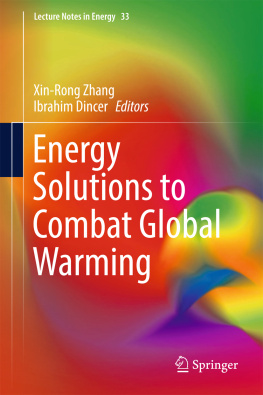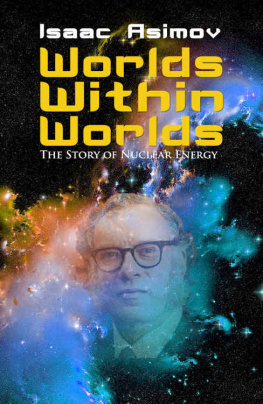ENERGY
INTRODUCTION TO PHYSICS
ENERGY
EDITED BY ANDREA R. FIELD

Published in 2012 by Britannica Educational Publishing
(a trademark of Encyclopdia Britannica, Inc.)
in association with Rosen Educational Services, LLC
29 East 21st Street, New York, NY 10010.
Copyright 2012 Encyclopdia Britannica, Inc. Britannica, Encyclopdia Britannica, and the
Thistle logo are registered trademarks of Encyclopdia Britannica, Inc. All rights reserved.
Rosen Educational Services materials copyright 2012 Rosen Educational Services, LLC.
All rights reserved.
Distributed exclusively by Rosen Educational Services.
For a listing of additional Britannica Educational Publishing titles, call toll free (800) 237-9932.
First Edition
Britannica Educational Publishing
Michael I. Levy: Executive Editor, Encyclopdia Britannica
J.E. Luebering: Director, Core Reference Group, Encyclopdia Britannica
Adam Augustyn: Assistant Manager, Encyclopdia Britannica
Anthony L. Green: Editor, Comptons by Britannica
Michael Anderson: Senior Editor, Comptons by Britannica
Andrea R. Field: Senior Editor, Comptons by Britannica
Sherman Hollar: Associate Editor, Comptons by Britannica
Marilyn L. Barton: Senior Coordinator, Production Control
Steven Bosco: Director, Editorial Technologies
Lisa S. Braucher: Senior Producer and Data Editor
Yvette Charboneau: Senior Copy Editor
Kathy Nakamura: Manager, Media Acquisition
Rosen Educational Services
Jeanne Nagle: Senior Editor
Nelson S: Art Director
Cindy Reiman: Photography Manager
Karen Huang: Photo Researcher
Brian Garvey: Designer, Cover Design
Introduction by Jeanne Nagle
Library of Congress Cataloging-in-Publication Data
Energy/edited by Andrea R. Field.1st ed.
p. cm.(Introduction to physics)
Includes bibliographical references and index.
ISBN 978-1-61530-732-6 (eBook)
1. Force and energyStudy and teaching (Middle school) I. Field, Andrea R.
QC73.6.E536 2012
531'.6dc23
2011021493
On the cover, : A gymnast in repose illustrates potential energy, while the ribbon she twirls demonstrates kinetic energy. Shutterstock.com
Pages : A catapult releases its payload, illustrating how potential energycreated when the catapult is pulled back and readiedchanges to kinetic energy. Steve Bronstein/The Image Bank/Getty Images
Cover (equation) Shutterstock.com; pp. iStockphoto/Thinkstock; remaining interior background images Shutterstock.com
CONTENTS



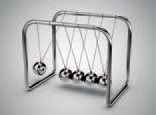
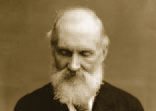
INTRODUCTION

E very day, children around the world are encouraged by their parents to go outside and play, to burn off some energy. But in the world of physics, energy is described in terms of work, not play. In physics, energy equals the ability to do work.
Truth be told, work means something a bit different to physicists than it does to the average person. In their vocabulary, work is not just doing tasks and keeping busy. For work to be involved, there has to be some kind of force that causes an object to move. Mathematically, if the object is moved in the same direction as the force, this is described as W = Fswork equals force times the distance (represented by s) moved. In other words, work is measured by how strong the force is and how far the object moves. The more work done on an object, the more energy it has.
Making this concept even more interesting is the fact that energy is not just one thing. There are different types of energy. The earlier idea of children playing comes in handy when describing the forms of energy. For instance, there is kinetic energy, which is the energy associated with motion. Running from third base to home plate while playing baseball is a good example of kinetic energy. So are riding a bike and swimming in a pool.
Then there is potential energy. This occurs when an object is positioned in such a way that its energy will increase once it is forced into motion. In other words, the object has energy because of its potential for movement. On the playground, a swing set provides an excellent example of potential energy. Pushing a swing puts it in motion, creating kinetic energy. But at the height of its motionwhen in a position to be pulled in a downward arc by gravitythe swing has potential energy. Likewise, a child sitting at the top of a slide has potential energy before he or she glides down its surface to the ground.
Kinetic and potential energy are the two most basic forms of energy, but there are others. Chemical energy is present whenever atoms are combined to form molecules, which make up the cells of every living thing. It is the chemical energy stored in a childs muscles that enable him or her to push a swing or run around a baseball diamond. As a bat or tennis racket strikes a ball, it gives off heat energy. Radiant energy is released by the Sun that shines, making outdoor play possible, while electrical energy is contained in bolts of lightning during a thunderstorm that sends everyone scurrying inside.
Another interesting fact about energy is that it has the ability to change from one form to another. As mentioned before, a child sitting on top of a slide has potential energy. That potential energy turns to kinetic energy as soon as he or she begins sliding down. Within an energy systema group of objects that transfer energy back and forth among themselvesenergy may move from one part to another, but the total amount of energy in the system does not change.
Studying physics certainly is not childs play, meaning it is not simple or unimportant. But with a little imagination, the idea of children playing can help make the concept of energy come alive.
CHAPTER 1
ENERGY BASICS

A rock falling off a cliff is different from the same rock lying on the ground below. A rubber band pulled taut is different from the same rubber band left slack. A glowing lightbulb is different from the same bulb when the electricity is switched off. It is the same rock, the same rubber band, the same lightbulb. The difference is one of energy.
Energy is one of the most basic ideas of science. All activity in the universe can be explained in terms of energy and matter. But the definition of energy is not at all simple, since energy occurs in many different forms, and it is not always easy to tell how these forms are related to one another and what they have in common. One of the best-known definitions of energy is the classical definition used in physics: Energy is the ability to do work.
Next page

